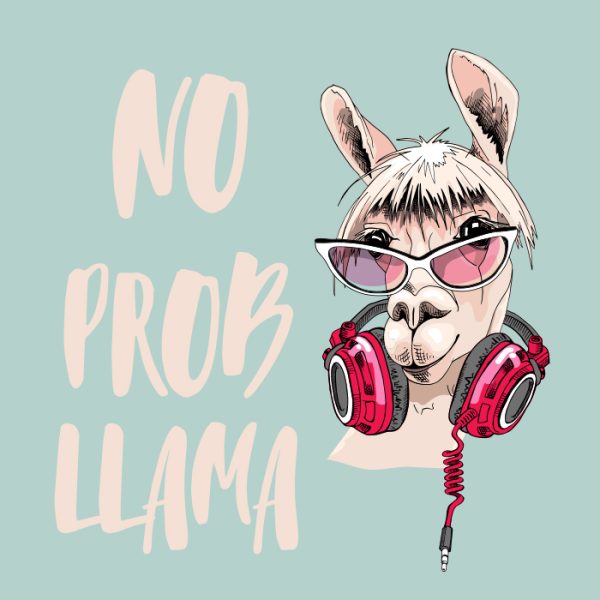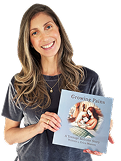Writing a book is like preparing a gourmet meal; you’ve seasoned it with imagination, simmered it in your blood, sweat, and tears, and plated it with passion. But before it’s ready to be served to readers, it needs a few taste tests and finishing touches. That’s where the post-writing process begins.
From beta readers who offer that first honest bite, to professional editors who help refine the flavors, and book cover designers who handle the visual plating, every stage matters. Just like a chef relies on sous-chefs and critics before opening night, authors rely on a team of early readers and pros to bring out the best in their story.
In this article, we’ll focus on one essential ingredient in that process: the beta reader. These literary taste testers are your early audience, offering fresh, constructive feedback on everything from plot holes and pacing to character believability and emotional punch.
You’ll learn how to find beta readers who understand your vision, what separates a great one from a not-so-helpful one, and how to turn their feedback into meaningful revisions. By the end, you’ll be better prepared to move from raw draft to a professionally polished manuscript, one step closer to publication. Time to take your manuscript to the next level
What’s a Beta Reader—and What Do They Do?
Imagine you’ve just finished the first draft of your first novel ever. It’s fresh out of your brain oven, piping hot, and maybe a little undercooked. Who do you turn to? That’s where beta readers come in. A beta reader is your early audience, someone who reads your work before it’s polished for publication and provides feedback to help you fine-tune it.
Unlike alpha readers, who might get a sneak peek at an early draft or your roughest ideas and drafts, beta readers step in once the story has taken shape (but before it’s ready for a professional editor). They’re not critique partners, who usually exchange ongoing feedback with you as fellow writers, nor are they developmental editors with advanced expertise. Instead, beta readers are like your “average reader”, except a bit more honest and willing to point out if your plot has a hole the size of a crater.
Think of beta reads as your well-meaning but brutally honest friend who might say, “I loved it… But why does your main character suddenly gain telepathy in Chapter 10?” That’s beta reading in action. These early readers are critical to the writing process, helping you identify areas that need work, whether it’s a sagging middle, stilted dialogue, or a side character stealing the show.
Simply put, beta readers help you see your story from a fresh perspective because when you’ve been knee-deep in drafts, it’s easy to lose sight of the bigger picture.
Why Finding Good Beta Readers Matters More Than You Think
Not all early reader feedback is created equal, and when it comes to your book, finding the right beta readers can make the difference between a manuscript that shines and one that falls flat. Good beta readers provide constructive feedback, spot plot holes, flag moments where your dialogue feels forced, and let you know if your main character’s big emotional moment hits like a freight train or a falling feather. These early insights are invaluable for catching craft issues before your book moves to the next stage.
On the flip side, relying on unqualified or overly biased readers (hello, Aunt Carol, who “just loves everything you do!”) to provide feedback can lead you astray. Family members and friends often lack the objectivity to give helpful critiques, while readers who aren’t familiar with your genre might focus on the wrong things altogether.
A strong beta reader acts as a bridge between your raw draft and a polished manuscript. They’ll give you honest, actionable feedback that helps you fine-tune your story before you invest in developmental editing or gear up for publication. Skipping this step, or settling for the wrong readers, can leave you with blind spots that even trained professionals might struggle to fix. Simply put, good beta readers are the unsung heroes of the writing process, helping you turn a rough gem into a dazzling diamond.
Where to Find Beta Readers: A Treasure Map for Writers
Beta readers don’t grow on trees, but with a little digging, you’ll discover plenty of places to find them. Whether you start with people you know, branch out into writer communities, or hire a pro, there’s a solution for every writer’s needs. Here’s your map to finding the perfect beta readers.
Start with Your Inner Circle
Your friends, family, and writer buddies might seem like the obvious first stop for beta readers. After all, they know you and want to see you succeed. However, each group comes with pros and cons.
- Friends and Family Members
They’re supportive and eager to help, but they might be too nice. Your cousin might love your book simply because you wrote it, and your well-meaning mom may not know enough about storytelling to catch plot holes or craft issues. - Writer Friends and Fellow Authors
Fellow writers are often sharper when it comes to constructive criticism. They understand the writing process and can spot issues like pacing or character inconsistencies. However, their feedback might lean toward “writerly” concerns that don’t align with your target audience.
While these readers can offer valuable insights, remember to balance their input with feedback from readers who represent your book’s genre or audience.
Go Wide with Fellow Writers and Online Communities
Sometimes, you need to cast a wider net to find beta readers who truly understand your vision. The internet is brimming with places to connect with other writers and early readers.
- Critique Groups and Writing Workshops
Local critique groups or writing meetups can be a great way to exchange beta reading favors. Writers helping writers is a win-win. - Facebook Groups and Social Media Platforms
Communities like “Beta Readers and Critique Partners” on Facebook or hashtags like #amwriting on Twitter can help you connect with potential readers. - Online Forums and Match-Up Sites
Check out forums like Reddit’s r/writing or websites like BetaBooks, Scribophile, and Critique Circle, which are specifically designed for writers to find beta readers. These platforms often allow you to target readers familiar with your genre or specific writing style.
Consider Paid Professionals
If finding the right beta readers feels like a needle-in-a-haystack situation, hiring a professional can be worth the investment.
When to Invest in Paid Beta Readers
If your book tackles complex topics requiring sensitivity or if your timeline is tight, a paid professional beta reader can provide detailed and reliable feedback. Sensitivity readers, in particular, can ensure cultural accuracy or address potential missteps in your portrayal of marginalized groups.
Beta Readers vs. Developmental Editors
Paid beta readers offer detailed general feedback as your target audience might, while developmental editors provide a deeper dive into details like your book cover and structural craft issues. The latter are trained professionals who go beyond feedback to help you reshape your book if needed.
Finding the best beta readers can take some trial and error, but with persistence and the right tools, you’ll assemble a team of early readers who’ll make your manuscript stronger and sharper. Whether you start with friends, connect online, or hire a pro, the treasure is in the feedback!
What Makes a Good Beta Reader? (And How to Spot Red Flags)
Not all beta readers are created equal. A good beta reader is more than someone who loves to beta read; they’re an invaluable asset to your writing process. But how do you know if you’ve found the right one? Look for these key traits:
- Honesty and Constructiveness
A good beta reader isn’t afraid to tell you when something doesn’t work, but they’ll also provide actionable suggestions to fix it. Instead of saying, “This part is boring,” they might say, “This scene slows the pace, maybe cut it or add some tension.” - Familiarity with Your Genre
A beta reader who knows your genre will understand its conventions and can flag elements that feel out of place. For instance, a fantasy reader will notice if your magic system has inconsistencies, while a romance reader will point out if the love story lacks an emotional payoff. - Specific Feedback
Vague comments like “It’s good” or “I didn’t like this part” won’t help you grow. A good beta reader will highlight specific issues, whether it’s a confusing subplot, an underdeveloped character, or dialogue that doesn’t ring true.
How to Spot Red Flags
Watch out for beta readers who:
- Offer only praise without critique (or tear your work down without suggestions).
- Get hung up on irrelevant details, like font choices or whether your protagonist’s name is “too trendy.”
- Lack of interest in your genre or not aligning with your target audience often leads to feedback that’s unhelpful or off-base.
Aligning with Your Goals
The best beta readers are like stand-ins for your future readers. They represent your target audience and understand what you’re trying to achieve. Whether your goal is nail-biting suspense or laugh-out-loud comedy, their feedback should help you move closer to your vision.
By choosing beta readers with the right traits and avoiding the wrong ones, you’ll gain the kind of insights that truly improve your manuscript.
Preparing for Beta Reading: Setting Yourself and Your Readers Up for Success
Sending your manuscript off to beta readers can feel like handing your baby to a stranger, terrifying yet necessary. To get the best feedback, you need to prepare both your manuscript and your beta readers. The secret? Clear instructions and a bit of strategy.
Step 1: Choose the Right Draft
Beta reading isn’t for your roughest drafts. That’s what critique partners (and copious amounts of coffee) are for. Your manuscript should be polished enough to represent your story, but still flexible for revisions. Think of it as the draft you’d show to a critique partner or a potential agent’s assistant, not perfect, but close.
Step 2: Provide Clear Instructions
Beta readers aren’t mind readers, so guide them with focus areas. Are you worried about plot holes? Ask them to note confusing sections. Wondering if your protagonist is relatable? Request specific feedback on their arc. A simple list of questions like “Did the ending feel satisfying?” or “Did any dialogue feel unnatural?” can steer readers in the right direction.
For those short on time, consider sending a single chapter or scene with targeted questions. This method is especially useful for testing emotional impact or pacing.
Step 3: Set Expectations
Let your beta readers know what kind of feedback you’re looking for, and what you’re not. For instance, if you’re not ready for nitpicks about grammar, tell them to focus on big-picture elements like character development or tone instead.
Pro tip: Don’t send your beta readers your first novel’s first draft. That’s what critique partners are for! Save them (and yourself) the agony of wading through a story that’s still finding its footing.
By prepping your manuscript and giving your beta readers the tools they need, you’ll set the stage for valuable, actionable feedback that takes your story to the next level.
Your Publishing Journey Awaits – Start NowGathering and Using Feedback: The Good, the Bad, and the Brutally Honest
You’ve handed the final version of your manuscript to beta readers, and now the feedback is pouring in. Some of it’s insightful, some of it’s puzzling, and some of it might sting. Don’t panic, this is where the real work begins. Processing feedback effectively is key to leveling up your manuscript.
Recognizing Trends vs. Outliers:
When sifting through feedback, look for patterns. If multiple readers flag the same plot hole or say a certain character isn’t relatable, it’s likely an issue worth addressing. On the other hand, if one beta reader insists your protagonist needs a pet ferret and no one else mentions it, you can probably file that under “opinion.” Trends are gold; outliers, not so much.
Separating Opinions from Actionable Critiques:
Feedback can range from “This chapter dragged a bit” (actionable) to “I just don’t like fantasy books” (opinion). Focus on comments that offer specific suggestions or point to areas where your story isn’t working as intended. If feedback aligns with your target audience’s expectations, give it extra weight; it’s your readers you’re aiming to please.
Handling Conflicting Feedback:
Conflicting opinions are common. One reader may love your twist ending, while another finds it confusing. In these cases, return to your goals and the point of view of your target audience. If you’re writing a mystery, and your twist fits the genre’s norms, stick with it. Sometimes, the middle ground is the answer, tweaking an element to satisfy both camps without losing your vision.
Avoiding Defensiveness:
It’s natural to feel protective of your work, but defensiveness will only block growth. Remind yourself that critique isn’t personal, it’s about making your story the best it can be. Instead of arguing with feedback, ask follow-up questions like, “What part of the ending felt rushed to you?” This approach turns criticism into a conversation.
Beta feedback isn’t about pleasing everyone; it’s about crafting a stronger story. Take what resonates, leave what doesn’t, and thank your readers for helping you grow. After all, even brutally honest critiques are a sign that they care about your success.
Alternatives and Supplements to Beta Readers
Beta readers are essential, but they’re not the only resource for refining your first book manuscript. Sometimes, combining feedback from multiple sources gives you the well-rounded perspective you need to take your book to the next level.
- Sensitivity Readers for Cultural Accuracy: If your story tackles diverse cultures, identities, or experiences outside your own, sensitivity readers are invaluable. They can point out stereotypes, inaccuracies, or problematic elements you might have missed. Think of them as your cultural authenticity check, ensuring your story resonates without unintentionally alienating your audience.
- Developmental Editors for Professional Guidance: When your manuscript needs more than reader impressions, a developmental editor can offer expert advice on story structure, pacing, character arcs, and more. While beta readers provide general feedback, developmental editors take a deep dive, helping you reshape your book with a trained professional’s eye.
- Critique Partners for Ongoing Support: Unlike beta readers, critique partners work alongside you throughout the writing process. They’re fellow writers who exchange feedback regularly, helping you refine each draft. This ongoing collaboration can address craft issues early, saving you headaches in the long run.
- Beta Testers: A Software Industry Approach: Much like beta testers in the software world, beta readers give you early-stage feedback from a “user” perspective. But even software teams rely on both testers and professional QA engineers, your book can benefit from a similar approach by blending beta feedback with professional input.
By incorporating sensitivity readers, developmental editors, and critique group partners alongside beta readers, you’ll ensure your manuscript is as polished, inclusive, and impactful as possible. Each feedback source plays a unique role, helping you craft a story that truly shines.
From Feedback to Final Book—How Beta Readers Help You Shine
Beta readers are more than early critics; they’re your creative allies. They help you spot plot holes, refine characters, and shape your story into its strongest form. Acting as the bridge between your rough draft and the finished book, their feedback is an invaluable part of the writing journey.
Yes, the process can be challenging, feedback isn’t always easy to hear, but every note is an opportunity to grow. Remember, even the most celebrated authors revise, refine, and rely on fresh perspectives. Embrace the journey, enjoy the unexpected comments (yes, even the ones about pet ferrets), and keep moving forward.
You’ve already written the first version of your story. Now it’s time to shape it into the version readers won’t want to put down.
FAQs – How to Find Beta Readers
Q1: What is the difference between a proofreader and a beta reader?
A beta reader gives feedback on early drafts, focusing on story elements like plot, pacing, characters, and emotional resonance. A professional proofreader, on the other hand, reviews the near-final manuscript to catch typos, grammar mistakes, and formatting issues. Beta reading happens earlier in the process; proofreading is one of the last steps before publishing.
Q2: When should I start looking for beta readers?
You should look for beta readers once your manuscript is fairly polished, after a few self-edits, but before professional editing. Ideally, your story should be cohesive and complete, so beta readers can evaluate the big picture and offer meaningful feedback.
Q3: How do I find beta readers on Goodreads?
To find beta readers on Goodreads, join writing and reading groups focused on your genre. Many authors post in dedicated “beta reader request” threads or in forums like “Beta Reader Group” or “Creative Writing.” Be sure to clearly state your genre, word count, and what kind of feedback you’re seeking.
Q4: Can family members be beta readers?
Yes, but with caution. While family members may offer encouragement, they often lack objectivity and may hesitate to give an honest critique. It’s best to supplement their feedback with that of genre-savvy readers who don’t have a personal stake in your feelings.
Q5: How many beta readers should you have for a novel?
Most authors benefit from 3 to 5 beta readers. This gives you enough variety in feedback without becoming overwhelming. If multiple readers point out the same issue, that’s a strong signal that it needs attention.
Q6: Do beta readers get paid?
Beta readers are usually unpaid volunteers, especially when recruited from writing communities or critique groups. However, some offer their services professionally for a fee, especially those with editing backgrounds or expertise in specific genres or topics (e.g., sensitivity readers).
Q7: How do I find critique partners or beta readers?
You can find them through:
- Online platforms like Scribophile, Critique Circle, and BetaBooks
- Facebook groups (e.g., “Beta Readers and Critique Partners”)
- Subreddits like r/BetaReaders or r/writing
- Writing workshops, local meetups, or MFA programs
Be clear about your genre, feedback needs, and timeline to attract the right match.
Q8: Can you skip beta readers?
Technically, yes, but it’s not recommended. Skipping beta readers means missing out on valuable, reader-level feedback that can highlight issues professional editors might overlook or approach differently. Beta readers offer a fresh perspective from your intended audience, helping you catch plot gaps, flat characters, or confusing moments before you invest in editing or publication. Think of them as an essential quality check for your story’s impact.








